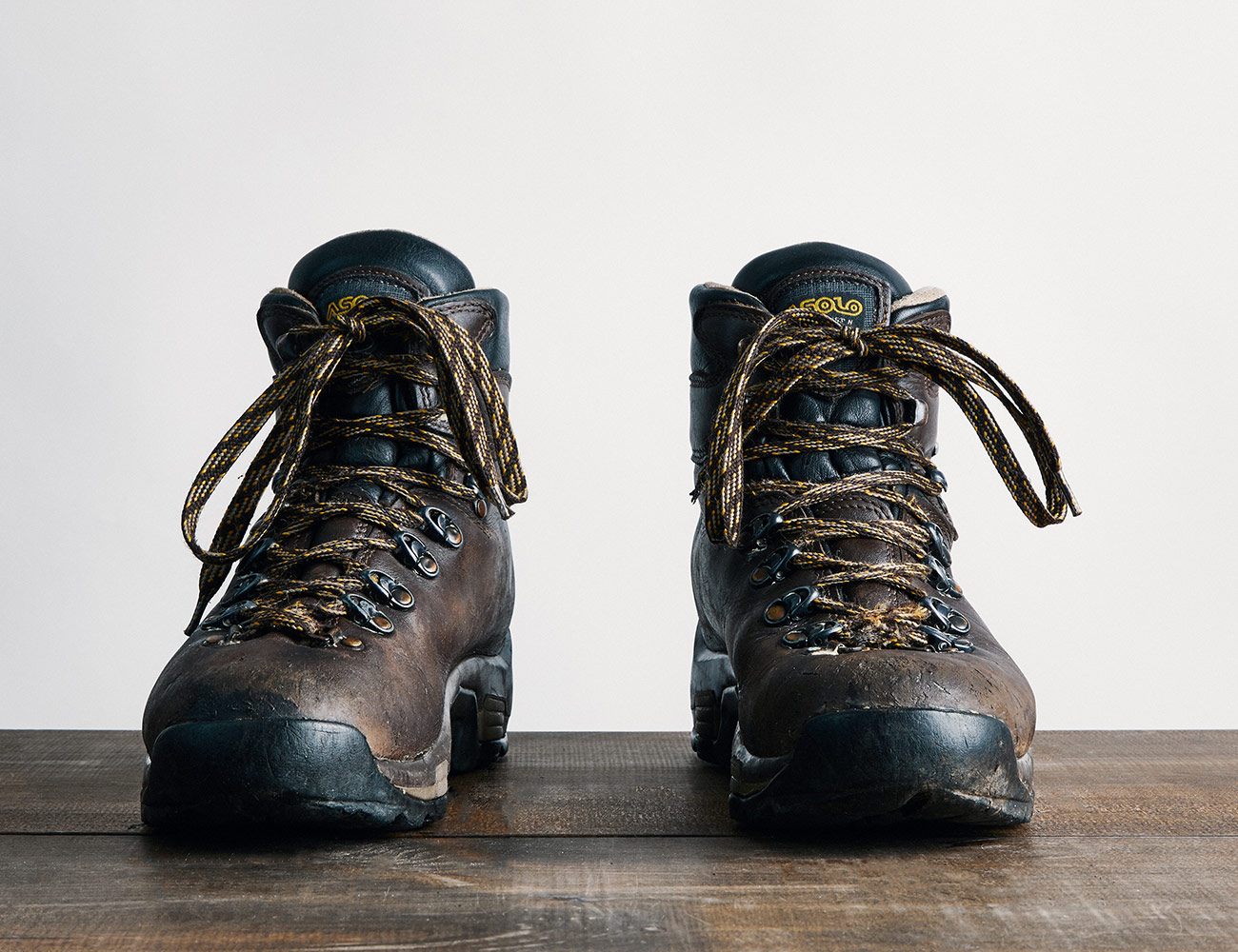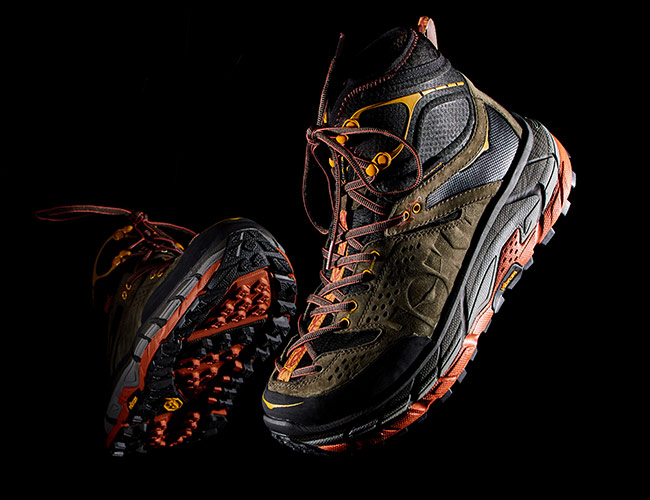We exist in a Golden Age of outdoor gear. Even items that angle more toward lifestyle than technical prowess meet a high bar of performance standards. Lightness, packability, versatility, durability, breathability and weather resistance are among the top driving factors continually pushing outdoor equipment to higher platforms. The result of this is that we’re now accustomed to items that offer impressive amounts of function but we often don’t wonder if we really need it.
Waterproofing in hiking boots presents a clear example. Hiking boots that are labeled as waterproof almost always have a water-repelling membrane made by Gore-Tex or other companies sandwiched into the layers of leather or synthetic material. It seems like a no-brainer that you’d want this extra barrier to protect you on the trail, but it comes at the price of breathability, turning the issue of choice into a compelling debate. Here, two members of Gear Patrol’s Outdoors Desk weigh in on the subject in an attempt to put it to rest.

The Argument for Waterproof Hiking Boots
“I live and die by the Gore-Tex diamond logo when it comes to outdoor gear. It stands for uncompromising waterproofing and breathability, and in many of my outdoor adventures, those things are crucial — especially in hiking boots. But nonsuch outdoor adventure proved my point more than 30 days in Norway’s arctic wilderness. Of the 30 days I was there backpacking across the tundra, it rained for 27 of them. Everything got wet. Even my Gore-Tex hiking boots eventually had water find its way over the tops of them when I had to ford rivers. But, short of those river crossings, my feet stayed perfectly dry through mud, tall grasses and shrubs. My socks remained dry and my feet toasty. I was even able to wear my socks to bed most evenings.
It is because of this experience that I recommend everyone purchase waterproof hiking boots. You never know when you’ll need to tread through a muddy puddle or be hiking through an unexpected rain storm. You might as well prepare for it. And just because you don’t need it for every hike you go on, it doesn’t mean you never will.” — AJ Powell, Assistant Editor
The Argument Against Waterproof Hiking Boots
“There is a time and place for everything, but when it comes to hiking, I’m of the mind that waterproof membranes inside your footwear is more often than not unnecessary. I can think of instances when it would come in handy — winter hikes, trails that pass over shallow streams, hikes in generally-wet environments — but they’re few and specific. Even in these cases though I’m not sure that waterproof boots actually keep your feet dry.
For one, unless you’re wearing gaiters, any crossing above the top of your cuff will fill your boots with moisture. The same is true for rain, although it’ll happen much more gradually as moisture runs down your legs and into your boots’ cuffs. Hiking shoes — meaning low cut models that leave your ankles free — are more prone to this. But my main reason for being against waterproof membranes in hiking boots is sweat. Any membrane, be it Gore-Tex, eVent or otherwise, will severely cut breathability and in warm weather, and that means sweaty feet. If you’re going to get wet either way, I’d rather have an option that’ll dry quicker on the trail, and that’s a boot without waterproofing.” — Tanner Bowden, Associate Staff Writer
Verdict: Truthfully, we thought this debate would rage on and require more scrolling, but we each found the other’s case to be compelling while refusing to give up any ground. The decision comes down to personal preference; how your body works, how you hike and where you live will all come to play in deciding whether to go waterproof or not. Hopefully, our brief argument has shed some light on the pros and cons associated with either choice.
Unlike concrete sidewalks and gravel paths, the trail calls for hardened and supportive footwear to combat dirt, mud, jagged rocks and streams. The answer is hiking boots and hiking shoes, and these are the best available. Read the Story




